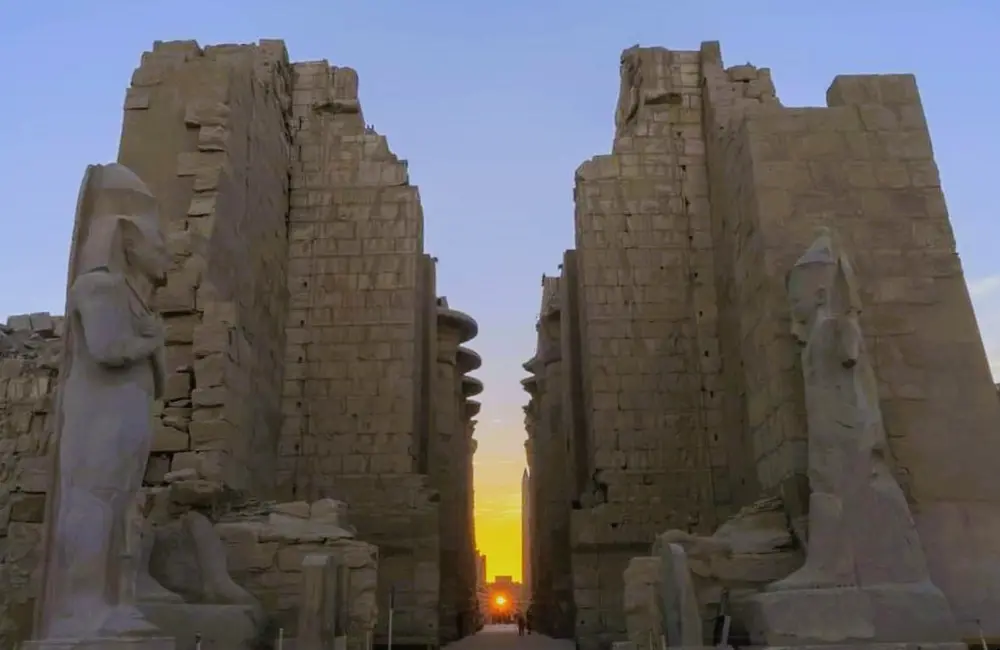The Karnak Temple is one of the most extraordinary and vast religious sites in the world. Located on the east bank of the Nile River in Luxor (ancient Thebes), Karnak is a monumental testament to ancient Egyptian religion, culture, and architecture. The complex served as the main place of worship for the Theban triad of gods: Amun-Ra, Mut, and Khonsu.
The Karnak Temple was the center of religious life in ancient Thebes for over 2,000 years. Construction began around 2000 BCE during the Middle Kingdom, but the site reached its peak during the New Kingdom (1570–1070 BCE). Each successive pharaoh added to the temple, creating a vast complex of sanctuaries, pylons, obelisks, and statues. – The most significant contributions came from pharaohs like Thutmose III, Hatshepsut, Ramses II, and Seti I.
The entrance to Karnak is marked by the grand Avenue of Sphinxes, which once connected Karnak to the Luxor Temple. These sphinxes have ram heads, symbolizing the god Amun. One of the most iconic features of Karnak is the Great Hypostyle Hall, covering 54,000 square feet with 134 massive columns arranged in 16 rows. The central columns, standing 69 feet tall, are crowned with papyrus capitals and are covered in intricate hieroglyphics and carvings
Karnak is famous for its towering obelisks, particularly those erected by Hatshepsut and Thutmose III. Hatshepsut’s obelisk, at 97 feet, is one of the tallest standing obelisks in Egypt.
Karnak was not just a temple; it was a central hub for religious, economic, and political activities in ancient Egypt. The priests of Amun at Karnak wielded significant power, especially during the New Kingdom. The Opet Festival, an important annual religious event, involved processions between Karnak and the Luxor Temple, celebrating the renewal of kingship and the divine union of Amun-Ra with the pharaoh.
The Karnak Temple is a monumental record of ancient Egyptian civilization. Its vast size, architectural achievements, and religious significance make it one of the most impressive temple complexes in the world, reflecting the power and devotion of the pharaohs who built it over many centuries.

